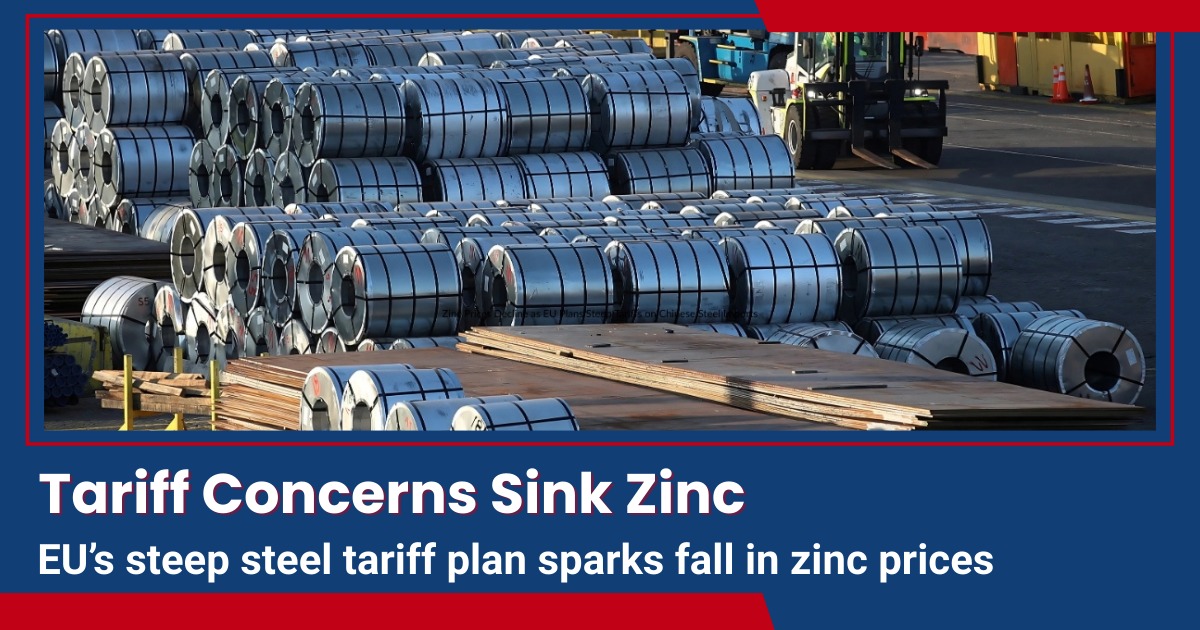India–US Trade Tensions Rise Over Steel and Auto Tariffs NMDC Limited reports a 38% drop in Q4 FY24 consolidated net profit RINL to Raise $23 Million Through Land Sales Amid Crisis

Zinc prices slipped in global commodity markets after reports emerged that the European Union (EU) is preparing to impose tariffs of up to 50% on Chinese steel imports. The decision is part of the EU’s broader strategy to safeguard its domestic steel producers from the twin pressures of global oversupply and the high costs of decarbonisation.
The news triggered concerns of reduced demand for industrial metals, particularly zinc, which is widely used in galvanised steel production. Analysts said that any potential slowdown in steel trade flows could weigh on zinc consumption, leading to the observed price correction.
China’s steel exports are projected to reach 115–120 million tonnes in 2025, close to record highs, and have become a flashpoint in global trade tensions. By preparing steep tariffs, the EU aims to curb dumping practices while encouraging investment in low-carbon, sustainable steel production within Europe.
The move also reflects the EU’s efforts to balance its climate goals with industrial competitiveness, as it accelerates the transition to greener technologies. For commodity markets, however, the uncertainty has translated into volatility, with zinc being one of the most immediate casualties.
Also Read : Germany to invest in green hydrogen by 2036 EU Steel Distribution Steadies; Confidence Still Weak